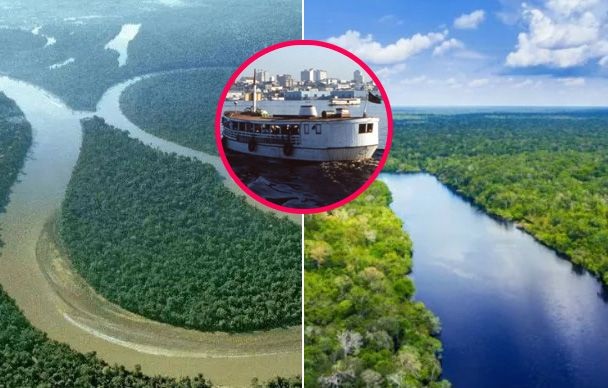Why does no one dare to cross the Amazon River?
This river is the Amazon – the top river in the world in many aspects such as flow, tributaries, basin, etc. and always has a high reputation in the international market.
The estimated flow of the Amazon River alone reaches about 219,000 cubic meters per second. This is the largest river in the world in terms of volume, nearly seven times the size of the Yangtze River. The average swimming pool that we see has a capacity of about 2,000 cubic meters, equivalent to the Amazon River filling hundreds of swimming pools like that in one second.

However, there is still no consensus on the length of the Amazon River. The most common information about the Amazon River is that it is 6,400 km long, the second longest in the world after the Nile River. After the discovery of this great river, people have always called it the “great river”. It was later named after the female warrior Amazon.
In addition, the Amazon River has many branches and may be at the top of all rivers in the world in terms of number of branches.
Accordingly, the Amazon River has up to 15,000 branches, and many branches and main streams cover a very large area in South America. Among the branches of the river, there are 7 branches that are longer than 1,600 km, and the longest is the Madeira River, with a total length of 3,200 km. However, there is a very strange phenomenon about the Amazon River.
Many branches of the river have bridges, but there is no bridge built specifically over the main stream. We often see many bridges built over rivers, mainly for the convenience of travel.
The reason for this situation is that building a bridge across the Amazon River would be very costly. In addition to the large flow, the terrain of the Amazon River area is relatively complex, and the cost of building bridges is still very high, so there has never been a bridge standing on the Amazon River.
Another reason is that the construction of a bridge must consider its practical use. If investing a large amount of money in construction, the utilization efficiency is not high.
Also, according to Unilad, an expert said: “There is no urgent need for a bridge across the Amazon.”
Although it is long, in many areas near the Amazon River, the population is sparse, meaning there are not many main roads for bridges to connect.
Where there are larger towns and cities, there are also boats and ferries to transport people and goods from one side to the other, which means that it is not difficult to travel without a bridge.
The Amazon River is not an ideal location for bridge builders, because it has a number of natural obstacles that engineers and construction workers need to overcome.
The vast swampy terrain and soft soil of this river will require very long and deep bridge piers. In addition, the changing position of the river’s flow throughout the seasons, the difference in water depth, will make construction extremely difficult. This is partly due to the fact that the water level of the river fluctuates throughout the year and the soft sediment on the riverbank erodes and shifts with the seasons.
Therefore, we can see that the reason for the terrain as well as the practicality of the economic value has made no bridge ever built on the Amazon River.

































